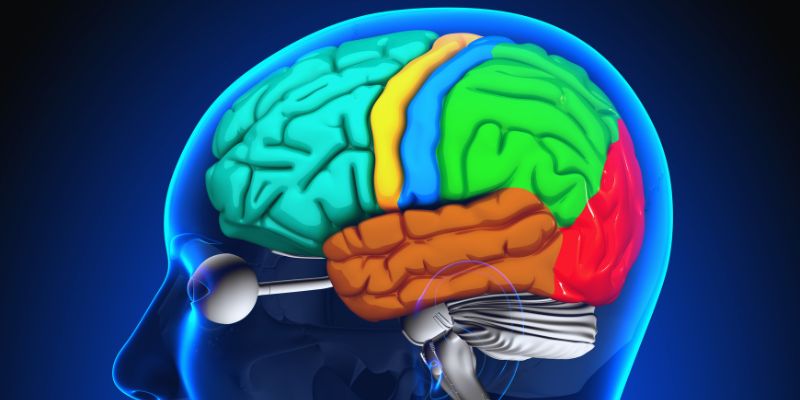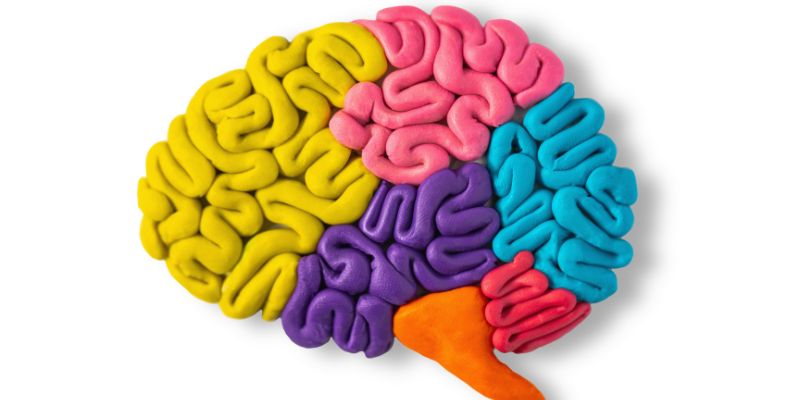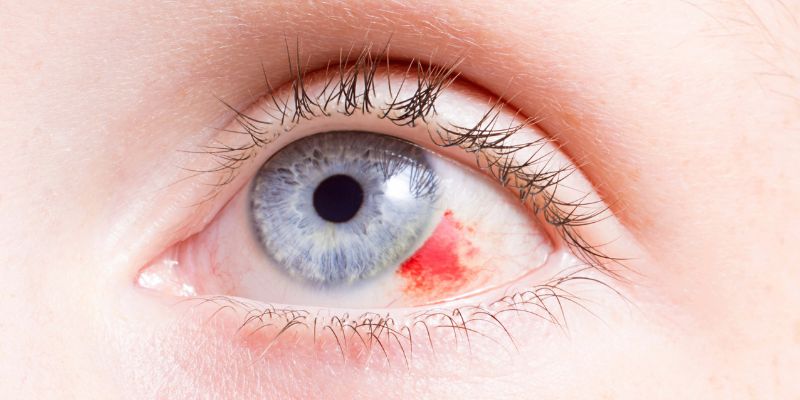Advertisement
A person's brain shrinks as they get older, among other changes. Many parts of the brain are involved in this process, which causes memory lapses, slower thinking, and sometimes changes in personality. But as we age, which area of the brain suffers the most? Research shows that particular areas are more vulnerable than others to shrinkage.
Knowing where and why this happens helps us appreciate better how aging affects mental health and cognition. Every regionfrom the hippocampal to the frontal cortexhas a function in memory, emotions, and reasoning. This article explores the areas of the brain that shrink most, the causes of shrinkage acceleration, and possible means of slowing it down.

Among the most important parts of the brain for learning and memory is the hippocampal area. Studies indicate that it is also quite prone to shrinking the brain area with aging. Long-term memories are stored in the hippocampal, which also links information and retrieves memories as needed. But as one age, this area progressively contracts, which affects memory recall and learning capacity.
Conditions including cognitive impairment and Alzheimer's disease can result from age-related atrophy of the hippocampus. Reduced hippocampus volume compromises our capacity to create and store fresh memories. It could manifest as forgetfulness, trouble picking up new abilities, or memory loss due to recent occurrences. However, a normal aspect of aging, stress, sleep deprivation, and genes can all affect rapid shrinkage in the hippocampal region. By safeguarding the hippocampal tissue, one can slow down aging's effects on memory and aid in maintaining mental clarity.
In front of the brain, the prefrontal cortex controls executive tasks like social conduct, problem-solving, and decision-making. Research shows that this area contracts greatly with aging, which lowers cognitive flexibility, slows response times, and compromises attention capacity. These developments influence regular chores needing fast thought and planning.
People may find it more difficult to accomplish challenging work, multitask well, or manage social interactions with the same degree of clarity as their prefrontal cortex ages. This drop could cause trouble adjusting to fresh material or surroundings. Regular mental exercisethat is, learning new abilities or playing demanding gamesis advised if one wants a good prefrontal cortex. Additionally supporting blood flow, physical activity keeps the brain active and slows the prefrontal cortex shrinking.
Tucked at the rear of the brain, the cerebellum controls coordination, balance, and movement. Though it's usually connected with motor skills, the cerebellum helps in several cognitive activities, including language and concentration. Research indicates that the cerebellum also shrinks with aging, which can affect cognitive as well as physical ability.
Older persons' risk of falls and injuries rises as shrinkage in the cerebellum causes delayed responses, balance problems, and decreased coordination. Tasks requiring fine motor skillssuch as writing, typing, or even flawless walkingshow clear signs of change. Maintaining a healthy cerebellum means keeping active physically. As we age, exerciseespecially activities targeted at balance and strengthcan help retain cerebellar health and reduce shrinkage, therefore boosting both movement and mental agility.
Found on the side of the brain, the temporal lobe handles memory storage, language, and auditory data processing. Another region prone to shrinkage as we age is this area, which manages verbal memorythat is, names and conversationsand its loss may affect language fluency and comprehension.
People with temporal lobe age-related atrophy can have trouble recalling names, identifying faces, or accessing vocabulary. They may also discover that they find it difficult to follow the talk or that they hunt for words more frequently. Activities that keep the temporal lobe activelike reading, listening to music, and learning new languagesmay help prevent this area from shrinking too much. Along with a good sleeping schedule, a diet high in antioxidants might help this area's health and functionality over time.

Many things can hasten brain shrinkage, affecting cognitive abilities more quickly than usual aging by itself. There is a hereditary component; certain people may be naturally inclined to accelerate brain aging. Health disorders, including diabetes, cardiovascular disease, and obesity, also cause faster brain shrinkage, particularly in areas connected to memory and decision-making.
Brain shrinkage has been proven to be exacerbated by lifestyle choices, including stress, a poor diet, smoking, and lack of physical activity. For example, persistent stress releases cortisol that, over time, damages brain cells. In the same vein, a diet devoid of antioxidants and omega-3 fatty acids can compromise brain function. Maintaining an active, balanced lifestyle, including regular exercise, mental engagement, and a healthy diet, can help greatly decrease the aging process of the brain and lower the chance of shrinkage in important areas.
Although aging naturally involves shrinkage of the brain, some behaviors can help slow it down. One of the best strategies to preserve the brain is physical activity since it boosts blood flow, supplying oxygen and nutrients to brain cells. Regular aerobic activities, including swimming, cycling, and walking, have been connected to better cognitive performance and less brain shrinkage.
Furthermore, mental stimulation is vital. New learning activities, puzzles, and other cognitive challenges serve to strengthen neural connections, hence preserving brain resilience and activity. Social contacts are also very important since meaningful interaction with people can improve cognitive ability and lower stress, thereby preserving brain health. Another important factor is nutrition. Essential nutrients found in diets high in fruits, vegetables, whole grains, lean proteins, and healthy fatslike those in fish and nutshelp the brain.
With areas including the hippocampal, prefrontal cortex, cerebellum, and temporal lobe most susceptible to atrophy, aging influences brain function. Though shrinking is inevitable, lifestyle choices can affect its speed and impact. Healthy aging and slowed brain shrinkage depend on regular exercise, mental engagement, social contacts, and a balanced diet. Knowing which areas are most impacted helps us to act early to preserve our cognitive capacity and mental health as we age.
Advertisement

By Gabrielle Bennett /Mar 16, 2025

By Susan Kelly/Mar 17, 2025

By Elva Flynn/Feb 19, 2025

By Maurice Oliver/Jan 15, 2025

By Aldrich Acheson/Dec 19, 2024

By Juliana Daniel/Mar 16, 2025

By Pamela Andrew/Dec 17, 2024

By Alison Perry/Oct 21, 2024

By Juliana Daniel/Oct 24, 2024

By Elva Flynn/Dec 25, 2024

By Christin Shatzman/Jan 07, 2025

By Susan Kelly/Dec 21, 2024